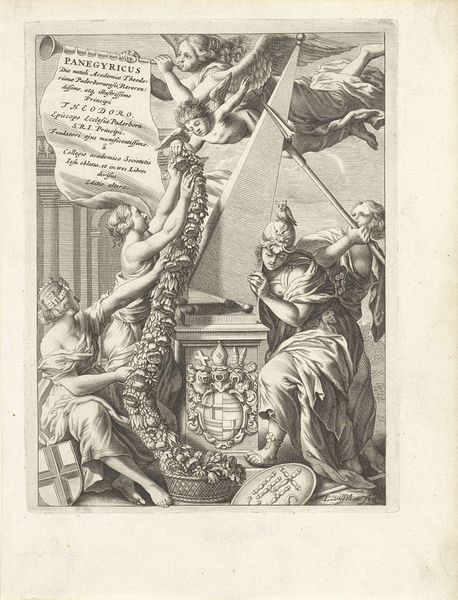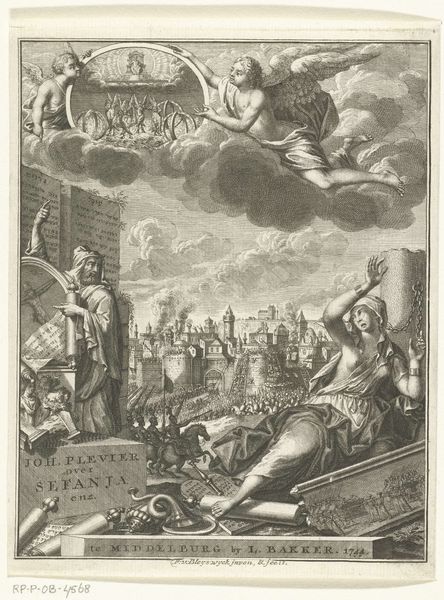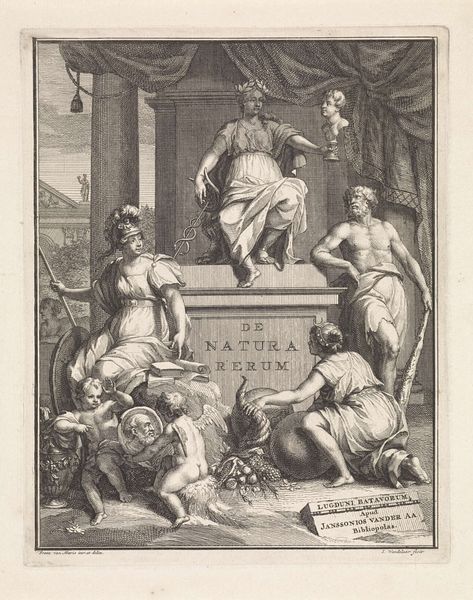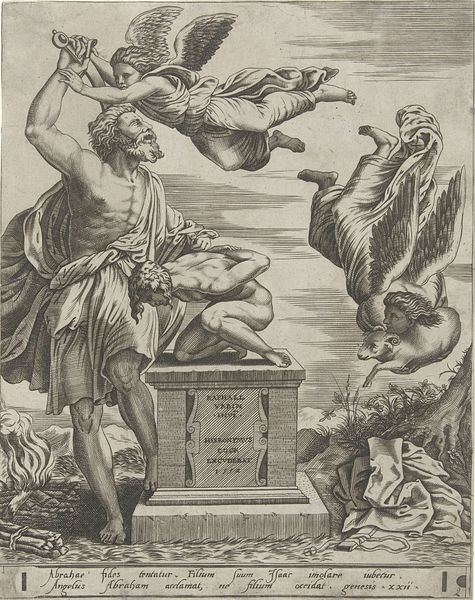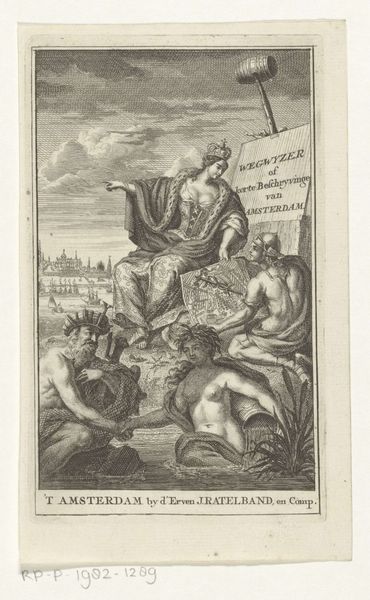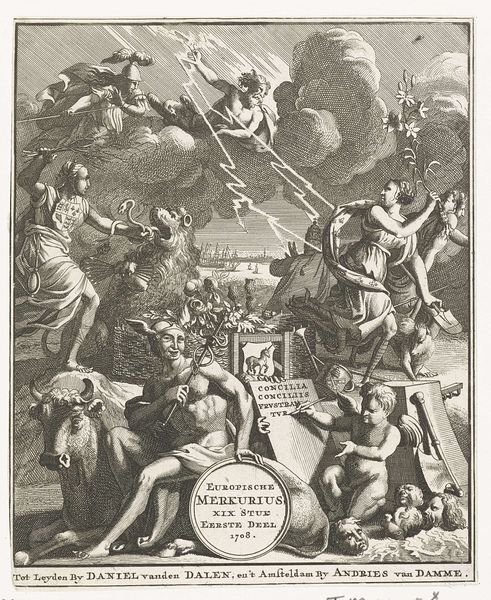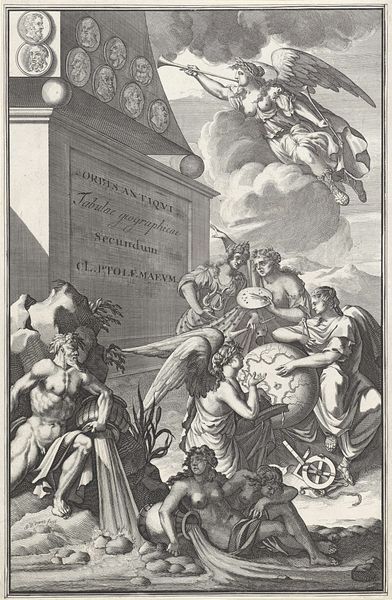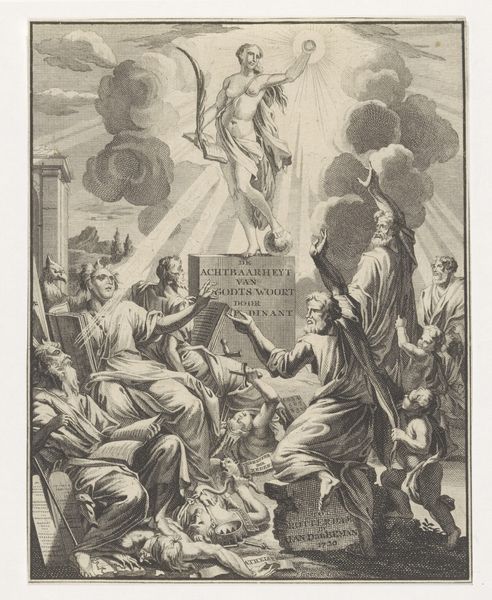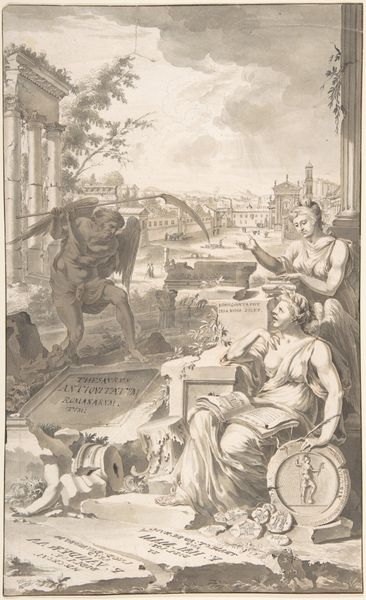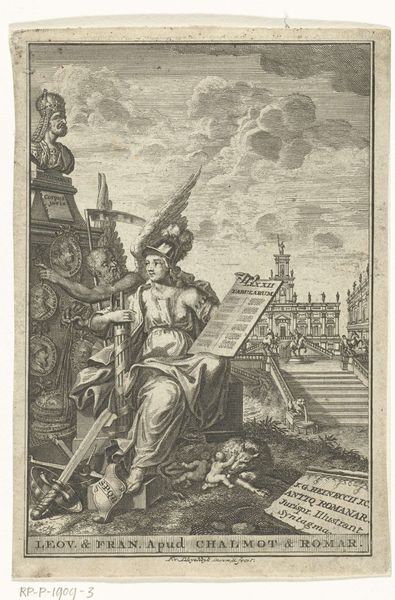
print, engraving
#
allegory
#
baroque
# print
#
old engraving style
#
figuration
#
line
#
cityscape
#
history-painting
#
engraving
Dimensions: height 224 mm, width 167 mm
Copyright: Rijks Museum: Open Domain
Curator: This is "Allegorie op Rome," created around 1685 by Pieter Philippe. It’s an engraving. What strikes you first? Editor: The wolf, undeniably. A strong, protective posture over those tiny children. There’s a ferocity, yet an undercurrent of gentleness. It resonates with something ancient, maternal, maybe a bit savage. How do you see it? Curator: Absolutely, the Romulus and Remus mythos is strongly embedded in this image. That wolf embodies Rome's founding legend. The whole composition is fascinating; look how it stacks symbols—the reclining river god, the triumphant Caesar-like figure, even that angel floating above. Editor: That layering…it’s almost dizzying. The river god especially is intriguing; he looks world-weary, doesn't he? Is he supporting or being crushed by all that weight above? Curator: I read him as embodying the lifeblood, the source, of Rome itself. His bounty, you see, flows directly from him, nourishing everything. But you're right, there's an ambivalence; the pressure of history and empire visibly weighs upon him. Editor: History IS heavy. But tell me about the cityscape visible in the background. Curator: The buildings are Rome, of course—its skyline, a backdrop to all the symbolic action happening in the foreground. See the Colosseum rising on the horizon. They provide context, anchoring the allegory in a tangible reality. Yet they're distant, idealized, part of the grandeur being celebrated. Editor: It’s interesting, this mix of realism and symbolism. It's as though Philippe is arguing for a specific idea of Rome—power, antiquity, resilience. A memory carefully constructed for an audience that needs reminding. What does it all come down to? Curator: To me, it’s an intricate tapestry woven with familiar narratives, reminding us that the foundations of power are built upon complex and sometimes conflicting mythologies. Editor: Yes, mythologies carefully arranged... perhaps obscuring a more complex reality. It makes me want to visit the Roman ruins immediately, to seek out fragments of what this image suggests. Curator: Indeed, art is a portal. It guides us deeper into questions rather than simple explanations, doesn't it?
Comments
No comments
Be the first to comment and join the conversation on the ultimate creative platform.
